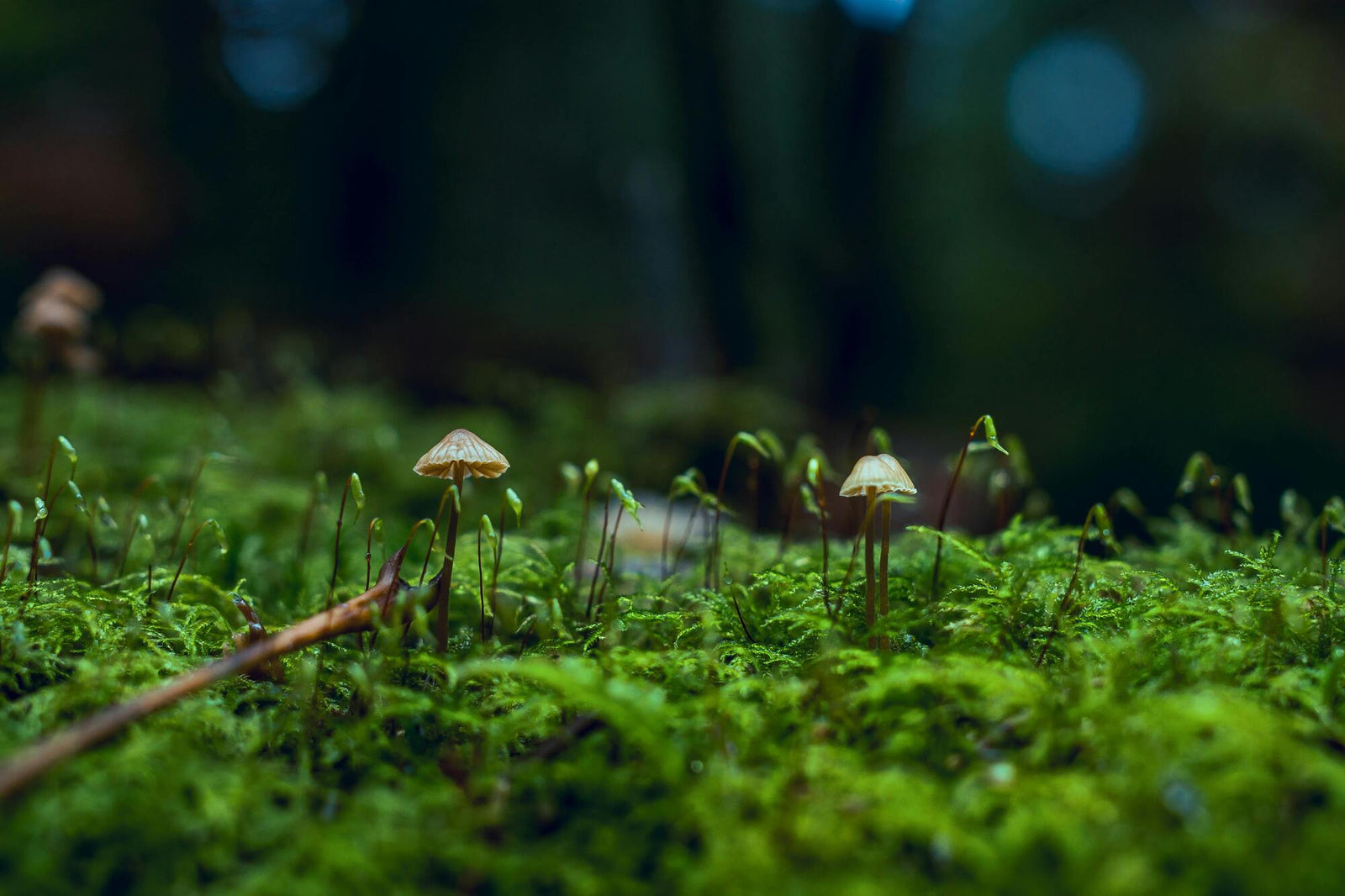Your Cart is Empty

October 23, 2024 14 min read
Take our quiz and find which supplements your body is craving.

Written by Chris Bellanger, BHSc in Nutritional Medicine
Hundreds of health-promoting herbs, berries, and other superfoods rich in antioxidants can be grown easily in temperate climates. They can enhance the flavor of dishes, provide powerful health benefits when steeped in herbal teas, or boost immunity in smoothies.
The best part is that getting started is much easier than you think, as these plants adapt to both indoor and outdoor settings and can be cultivated almost anywhere! In this article, we’ll explore the primary benefits of these antioxidant-rich plants, how to grow them, and how you can incorporate them into your regular diet.
Rosmarinus, or “Rose of the Sea,” was sacred to Venus, the goddess of love in Roman mythology. The Greeks commonly wore it during exams to enhance memory.
Used for its culinary and medicinal properties, it is rich in carnosic acid, rosmarinic acid, and other powerful antioxidant polyphenols, contributing to its well-known anti-inflammatory, antimicrobial, memory-enhancing, and neuroprotective properties. (1, 2)

Believed to instill courage, Romans bathed in thyme before battle, and knights from the Middle Ages knights carried sprigs for bravery.
Widely utilized in food, pharmaceuticals, and cosmetics, thyme is a fantastic herb that’s easy to grow in or outdoors. Its active compounds, particularly thymol and carvacrol, contribute to its antibacterial, antioxidant, and anti-inflammatory properties. Historically, it has been used for respiratory and digestive ailments. (3, 4)
Symbolizing immortality and wisdom to the Romans and used to promote fertility by the Egyptians, sage is a perennial herb with significant culinary and medicinal applications, recognized for its diverse therapeutic properties.
Its phytochemical constituents, including α-thujone, β-thujone, and rosmarinic acid, contribute to its antioxidant, antimicrobial, anti-inflammatory, and neuroprotective effects. (5, 6, 7)

According to the Greeks, oregano was created by Aphrodite as a symbol of joy, but it was commonly used as an antiseptic for digestive issues. Oregano is a hardy and versatile herb with significant health and culinary applications.
Historically, oregano treated various ailments, including respiratory and digestive issues. Modern research highlights its antimicrobial, antioxidant, and anti-inflammatory properties, primarily attributed to compounds like carvacrol and thymol in its essential oil. (8, 9)
Traditionally used to uplift spirits and clear the mind, mint was commonly used in many cultures as a digestive aid before meals. It’s a well-known herb with a rich history of medicinal and culinary uses attributed to its bioactive compounds.
Its primary bioactive components include monoterpenoids and phenolic compounds, which exhibit a range of pharmacological activities such as antimicrobial, digestive, anti-inflammatory, and antioxidant effects. (10, 11) Mint is rich in flavonoids and phenolic compounds that provide antioxidant and digestive benefits
Known by many names, including melissa or “Bee Balm,” since it attracts many pollinators, lemon balm is a fragrant herb with a citrusy scent. It is known to improve sleep and relieve stress, as well as have anti-inflammatory and antioxidant properties.
It was commonly infused with wine to “gladden the spirits” and was a key ingredient in Carmelite water, a well-known headache tonic. Rich in flavonoids and rosmarinic acid, lemon balm is commonly used for insomnia, thyroid issues, lipid-lowering properties, and more. (12, 13)

Derived from the Latin word “lavare,” meaning “to wash,” due to being used in Roman baths, it was popular in England, Egypt, and Europe for love potions, deterring evil spirits, and even mummification processes.
There are many beautiful species of lavender, with Lavandula angustifolia being the most recognized for its extensive medicinal properties and therapeutic applications. Lavender is used in various forms, including as an essential oil in aromatherapy for insomnia and stress, and it is very popular in cosmetics. (14, 15)
The ancient Romans believed it gave strength to warriors, and the Greeks used it to promote weight loss. Fennel is renowned for its diverse medicinal properties and culinary uses, particularly its beneficial effects on the gastrointestinal system and female reproductive health issues. (16, 17)

The Romans used chamomile to flavor drinks and incense, and it was widely employed to treat digestive issues and calm the nerves. Chamomile is a widely recognized medicinal herb known for its diverse therapeutic properties. It is also a beautiful plant with lovely foliage and flowers suited for indoor or outdoor growing.
As a traditional remedy, it treats various ailments, including stress, gastrointestinal disorders, skin issues, and infections. The plant contains over 120 chemical constituents, including flavonoids, terpenoids, and phenolic compounds, contributing to its pharmacological activities. (18, 19)
Echinacea, native to North America, is a renowned medicinal plant with beautiful and long-lasting flowers. Primarily known for its immune-boosting effects, echinacea can easily be grown indoors in pots, with roots being harvested at the end of the growing season annually. Key active constituents include phenolic compounds and polysaccharides, contributing to its therapeutic efficacy. (20, 21)
Goji berries are known as “happy berries” for bringing joy and positivity. They have been used in Chinese medicine for over 200 years as a longevity tonic. Goji berries are recognized for their extensive health benefits and rich phytochemical content. These berries are traditionally used in Chinese medicine to address various ailments, including hypertension, diabetes, and immune deficiencies.
Their pharmacological properties include antioxidant, anti-inflammatory, and anti-tumor effects, making them valuable in dietary and therapeutic contexts, as they are in antioxidants such as polysaccharides, flavonoids, and carotenoids. Goji berries are packed with antioxidants like vitamin C and carotenoids, supporting immune function and eye health. (22, 23, 24)

Blueberries were called “star berries” by Native Americans due to their five-pointed shape. They were used to make “pemmican,” a travel food made of dried meat, fat, and berries. They are recognized for their extensive health benefits attributed to their rich content of phytochemicals, particularly anthocyanins. Blueberries also make great container plants with nice foliage, and of course, their beautiful color is an ornamental bonus.
Regular consumption of blueberries has been linked to improved cardiovascular health, enhanced cognitive function, and better management of metabolic conditions such as diabetes. (25)
Comfrey is a medicinal plant with a long history in traditional medicine. It is primarily recognized for its anti-inflammatory, analgesic, and wound-healing properties. It was commonly called “knit bone” for its ability to promote bone healing, and its poultices are still used for muscle and joint pain.
Recent studies have highlighted its complex phytochemistry, revealing key compounds such as allantoin, rosmarinic acid, and phenolic markers like globoidnan A and B, contributing to its therapeutic effects. Comfrey extracts have demonstrated efficacy in treating muscle and joint pain and promoting healing in wounds and fractures. (26)
Gotu kola, aka the “arthritis herb,” is a medicinal herb renowned for its diverse pharmacological properties and considered by many as a cure-all. Elephants were believed to commonly eat gotu cola, which is considered a longevity tonic. The famous Chinese herbalist Li Ching-Yuen claimed his 200-plus-year life was due to eating fresh gotu cola leaves daily.
It is rich in phytochemicals such as triterpenoids, flavonoids, and saponins, contributing to its antioxidant, anti-inflammatory, and wound-healing effects. Research indicates that gotu kola enhances cognitive function, promotes collagen synthesis, and aids skin health, making it valuable in traditional and modern medicine. (27, 28, 29)
Associated with the goddess Freya in Norse mythology, Elderberry was considered sacred by many cultures, including the Greeks and Romans, who used it for colds and flu. Elderberry is a flowering plant recognized for its rich bioactive compounds, particularly anthocyanins and polyphenols found in the beautiful dark red berries, contributing to its antioxidant and anti-inflammatory properties.
It is widely used in dietary supplements for various health benefits, including immune support, cardiovascular health, and anti-diabetic effects. (30, 31, 32)
Simmer elderberries with honey, ginger, and cinnamon to create a syrup that boosts the immune system.

The Greeks and Romans used black currant syrup to treat throat and lung issues, and it later became a vital source of vitamin C for the British. Currants, particularly black and red varieties, are recognized for their significant nutritional and medicinal properties.
Rich in flavonoids, polysaccharides, tannins, and vitamin C, currants are noted for their antioxidant properties. Studies have demonstrated substantial polyphenol content and antioxidant activity, contributing to health benefits.
The oil derived from black currant seeds contains essential polyunsaturated fatty acids with many health benefits. (33, 34, 35)
Sorrel is a perennial herb recognized for its high nutritional value and medicinal properties. Its delicious tangy taste is great in soups, salads, and many other dishes.
It is rich in vitamins A and C, minerals, and antioxidants, contributing to its use in traditional medicine, including boosting the immune system, promoting skin health, and reducing inflammation. It also contains minerals like potassium and magnesium, important for cardiovascular health. (36, 37, 38)
You can enjoy numerous culinary and health benefits by growing these nutrient- and flavor-rich herbs and plants in your backyard or kitchen countertop. Not only will they add vibrancy to your meals, but they’ll also pack a punch thanks to antioxidants and other properties that promote wellness.
Support a balanced lifestyle by incorporating a variety of herbs into your diet, from an oregano-infused tomato sauce to lemon balm or sage tea. It’s never been easier—or tastier—to prioritize your health!
Dive into our world of non-GMO, fat-free, wellness-boosting products and optimize your supplement stack today.

March 20, 2025 8 min read
Discover the benefits of creatine for women with Amandean’s Creatine HCI. Improve strength, energy, recovery, and cognitive function with this high-absorption formula. Its advanced HCl form ensures easy digestion and no bloating, providing all the benefits without the drawbacks. Elevate your fitness journey and overall wellness with a supplement designed for women’s unique needs.

March 03, 2025 7 min read
Discover how Bryan Johnson, a tech entrepreneur turned biohacker, uses cutting-edge science and personalized genetic testing to revolutionize health and longevity. Learn how biohacking, from diet to mental health practices, can help you live longer and healthier, with practical strategies to optimize your well-being. Find out more about genetic testing, and ways to implement results into your wellness routine.

February 19, 2025 6 min read
Explore the remarkable health benefits of medicinal mushrooms like Lion’s Mane, Turkey Tail, Chaga, and Reishi. These superplants support immune function, reduce inflammation, and boost brain health. Learn about Amandean's Brain Health supplement, combining Lion’s Mane, Magtein, and Alpha-GPC for optimal cognitive performance.